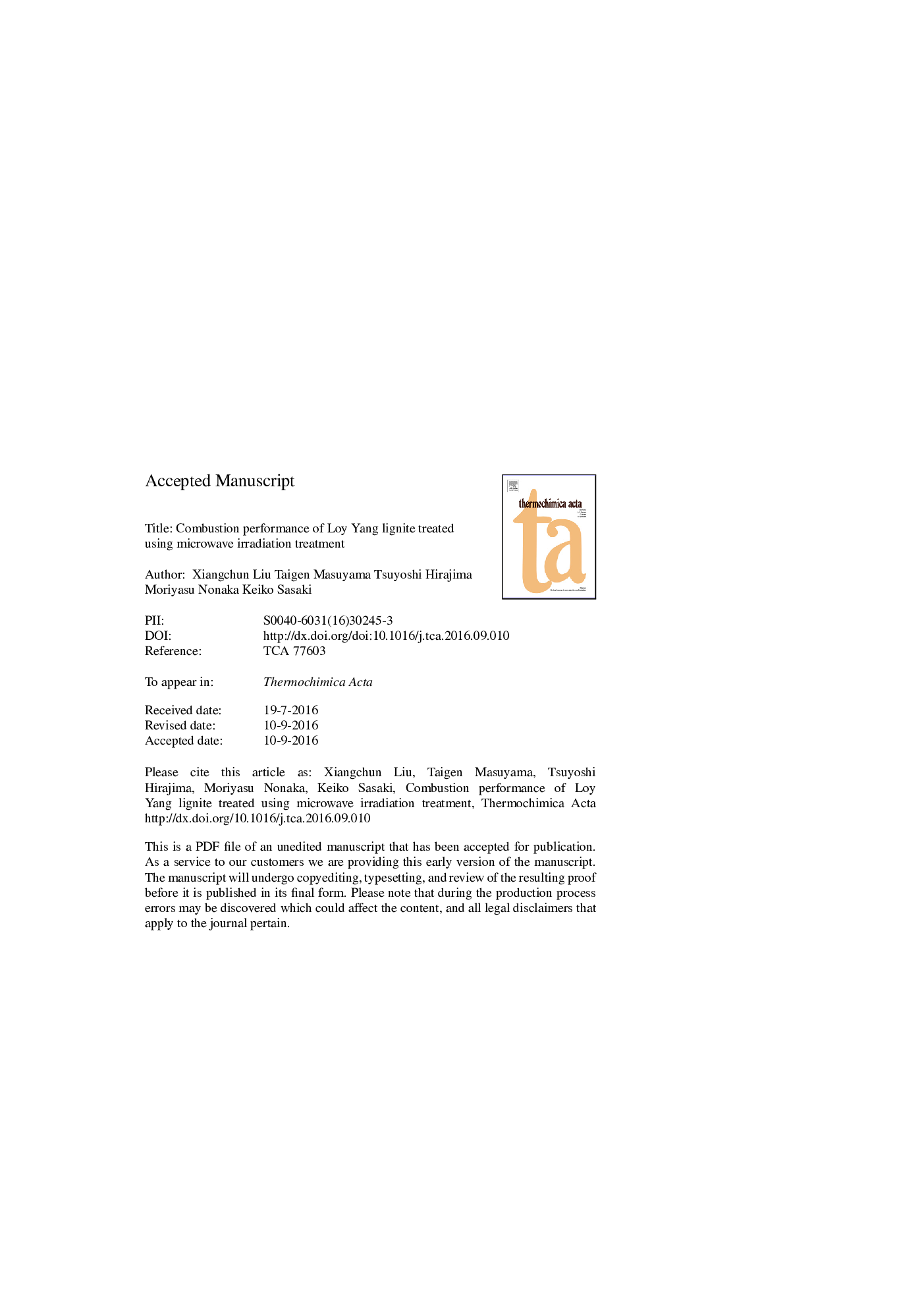| Article ID | Journal | Published Year | Pages | File Type |
|---|---|---|---|---|
| 4996106 | Thermochimica Acta | 2016 | 28 Pages |
Abstract
The combustion characteristics and activation energy of the microwave irradiation (MI) treated lignite were investigated by thermogravimetric analysis at different heating rates. Effects of the changes in physicochemical properties (amounts of volatile matter and fixed carbon, specific surface area, and pore volume) on the combustion performance were also discussed. The activation energy was calculated using the Kissinger-Akahira-Sunose isoconversional method. The results showed that ignition temperature of the MI treated samples increased significantly relative to that of raw lignite, and it gradually increased with increasing MI time, indicating that MI treatment decreases the reactivity of lignite, which progressively decreases as MI time increases. The maximum combustion rates of the treated samples were higher than that of raw lignite, suggesting that MI treatment modifies the combustion intensity of Loy Yang lignite. Moreover, the combustion processes of samples treated by MI for 5 and 7Â min were single rate-limiting step kinetics, whereas raw lignite and samples treated by MI for 3 and 9Â min followed multistep kinetics. Average activation energy for sample treated using MI for 5Â min was the maximum value, and it decreased with further increasing MI time because of the increased effect of diffusion.
Related Topics
Physical Sciences and Engineering
Chemical Engineering
Fluid Flow and Transfer Processes
Authors
Xiangchun Liu, Taigen Masuyama, Tsuyoshi Hirajima, Moriyasu Nonaka, Keiko Sasaki,
